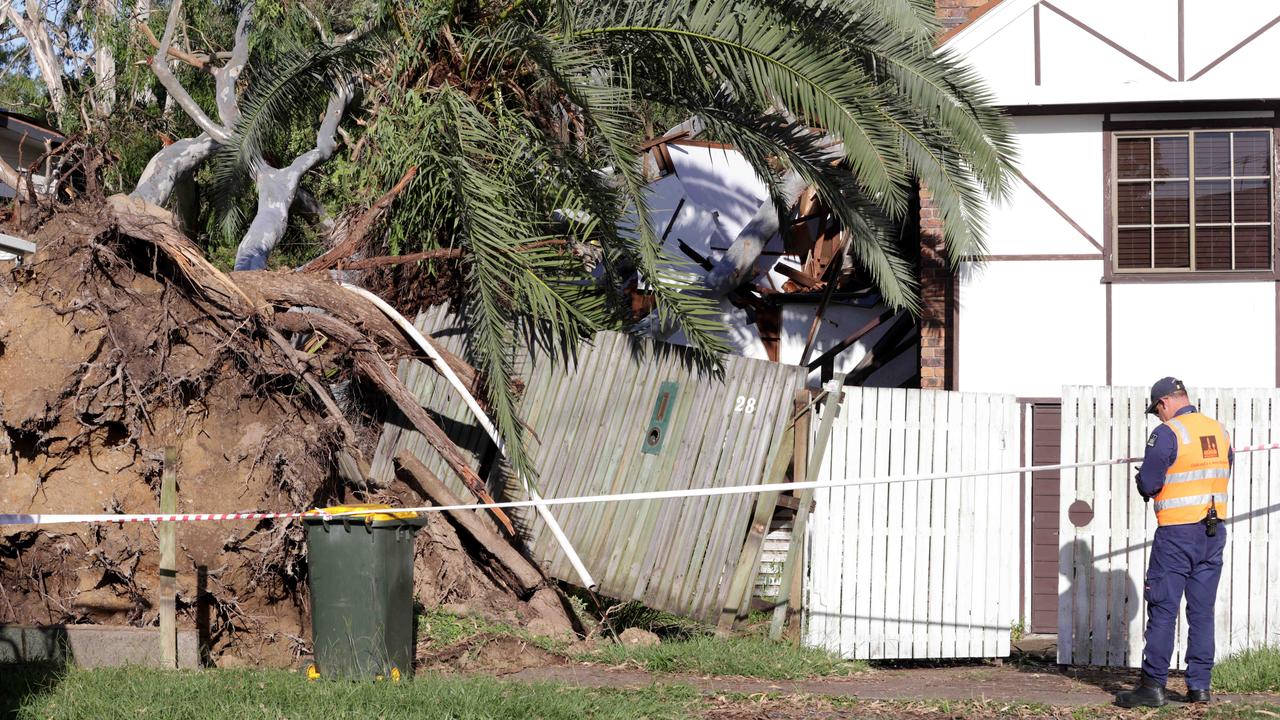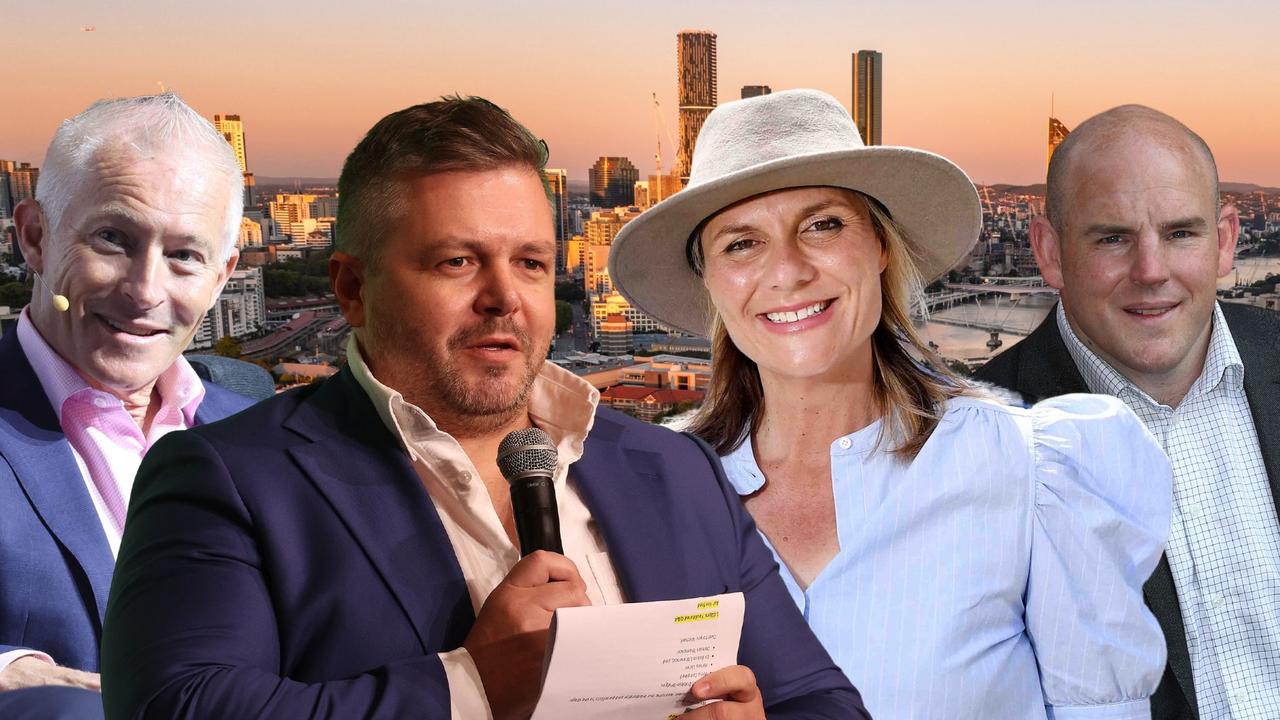Sea World tragedy was no ‘freak accident’: ATSB chief commissioner
The fatal Sea World helicopter crash was not a “freak accident” and an investigation will likely identify “systemic” safety issues, the Australian Transport Safety Bureau chief commissioner says.
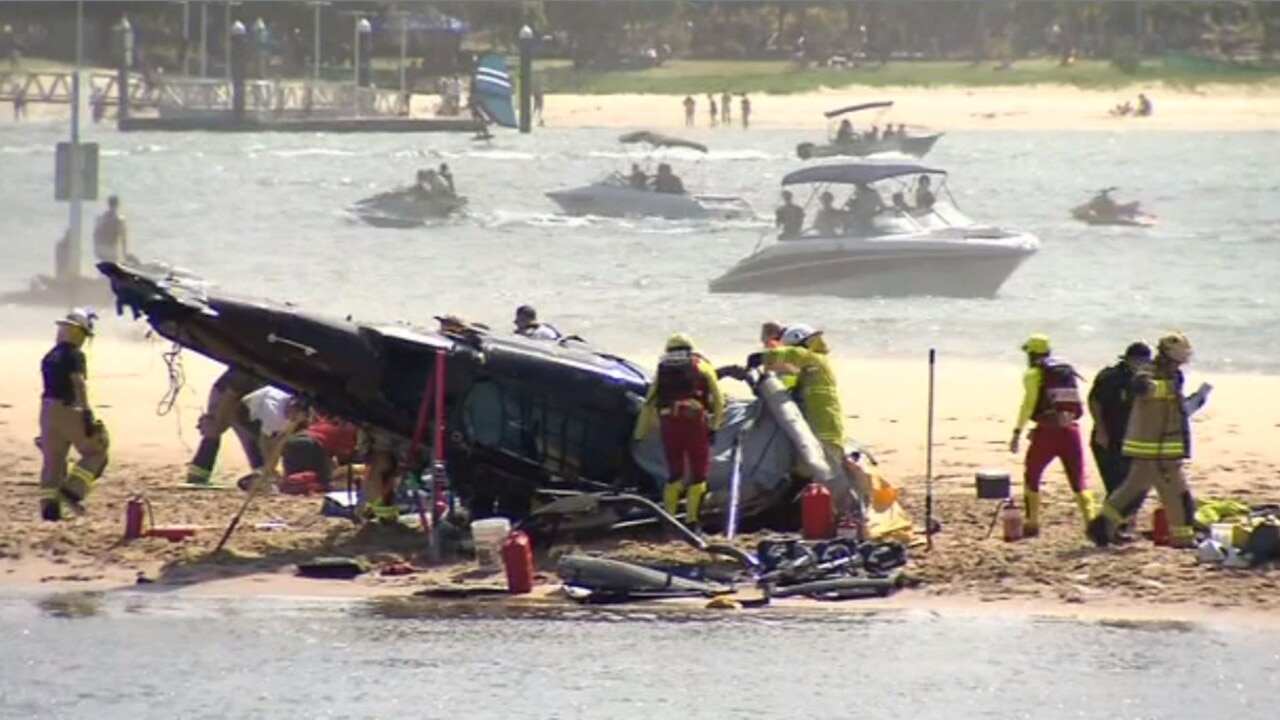
QLD News
Don't miss out on the headlines from QLD News. Followed categories will be added to My News.
A sweeping overhaul of helicopter joy flight safety rules has been flagged by Australia’s air crash investigation boss after a preliminary report into the Sea World chopper tragedy found alarming issues with pilot communication and procedures.
The Australian Transport Safety Bureau on Tuesday handed down its initial report into the January 2 disaster which claimed the lives of Sea World Helicopters chief pilot Ash Jenkinson, British tourists Ron and Diane Hughes and Sydney woman Vanessa Tadros.
It found Mr Jenkinson and the other pilot, Michael James, may not have seen each other or even communicated in the lead-up to the mid-air collision above the Southport Broadwater.
Neither chopper had radio call recorders, their collision avoidance systems were not fully operational and one of the aircraft had a faulty transponder which Sea World Helicopters knew about, the report found.
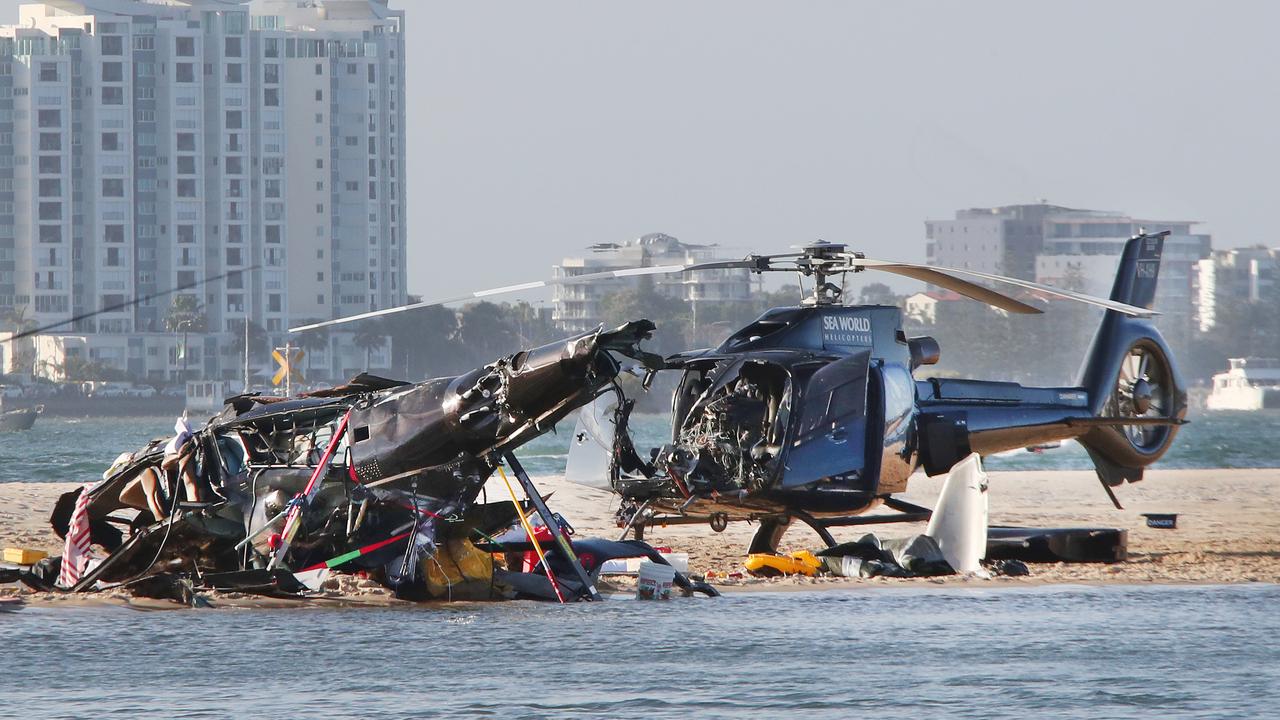
ATSB Chief Commissioner Angus Mitchell said he did not believe the crash was a “freak accident” and was confident the investigation would identify “systemic” safety issues.
“The investigation will look closely at the issues both pilots potentially faced in seeing the other helicopter,” he told a media conference overlooking the crash site.
A safety overhaul including high-visibility paint on rotor blades, extra strobe lighting, helipad controllers and cockpit iPads with live radar has already been floated by Sea World Helicopters, whose flights have been grounded since the crash.

Mr Mitchell said he was “acutely aware” that those who had lost their loved ones in the crash or been injured wanted answers.

“(They) want to not only understand how the tragedy unfolded but, equally and most importantly, why it occurred,” he said.
“And why didn’t the safety equipment, processes and procedures that are designed to prevent an accident like this, work on this occasion?”
The crash happened as Mr James was preparing to land his helicopter near Sea World and Mr Jenkinson was taking off.
Mr James, the pilot of the helicopter which miraculously landed on a sandbank with no fatalities, told ATSB investigators he did not hear a taxi call over the radio from fellow pilot Ash Jenkinson as that aircraft took off.
However, the report said that did not necessarily mean a call was not made “and this topic will be subject to detailed analysis by the ATSB investigation”.
Mr James also told investigators he did not see Mr Jenkinson’s helicopter take off before the collision.
He said he recalled seeing that helicopter loading passengers on the ground and believed it would pass by behind them as they came in to land.
The ground crew members who helped load passengers into the doomed chopper piloted by Mr Jenkinson later reported that they had not seen any other aircraft before giving the signal for the helicopter to take off.

Mr James later told the ATSB he did not see Mr Jenkinson’s chopper as he approached the landing pad, saying he was “focused on the landing site, and on managing rotor down wash to avoid a pleasure craft crossing their approach path”.
Investigators have also analysed mobile phone footage from passengers onboard the ill-fated flights, but the preliminary report stressed that “this does not mean that the helicopters were visible to either pilot from their position in the helicopter, or even the passengers filming and this aspect will be subject to detailed analysis by the ATSB investigation”.


The report said the “operator was aware that there was a problem with (Mr James’) aircraft’s transponder” and that the aircraft was not able to be used in controlled airspace until it was rectified.
Both helicopters were fitted with a traffic collision avoidance system (TCAS), but the systems had not been “fully integrated” and were providing pilots with only auditory alerts and not visual information.
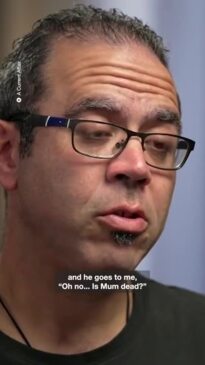
Mr Mitchell said a 3D model of the pilot’s seat had been built for a detailed visibility study “to help the investigation determine the impediments both pilots may have faced in sighting the other helicopter”.
Asked if the joy flight schedule may have been too “hectic”, Mr Mitchell said: “We’re certainly looking at the scheduling as part of the investigation, (but) equally what happened on the helipads in preparing the passengers for the flight and the procedures that were taking place there.”
He added: “We need to look more broadly at the processes to keep helicopters separated at that lower level.”

Asked about the potential for criminal charges, he said: “That’s not for the ATSB. We don’t recommend criminal charges, that would be something completely up to the local police.” No charges have been laid.
Mr Mitchell said the final report into the crash could take up to two years, with investigators poring over “thousands” of pieces of evidence, almost 100 witness statements and more than a dozen videos from inside both helicopters and nearby buildings.
“Aviation safety is complex and it is designed that there are no single points of failure,” he said.
“We will need to look at multiple lines of inquiry to better understand (what happened).”
Aviation expert Keith Tonkin, managing director at Aviation Projects, said the report highlighted the complex nature of the crash.
“It (the report) validates what we thought at the time, which was that the pilots simply weren’t aware of each other in the final phase,” he said.
“(But) there’s more to the puzzle than just radio calls, it’s not just one thing, there’s a whole range of factors.”
Sea World Helicopters said it would “take the right amount of time and due care” to review the preliminary report which it said was “another reminder of the tragic loss suffered that day”.
The company paid its “deepest respect” to those who lost their lives and to survivors including 10-year-old Nicholas Tadros, who remains in hospital after having his foot amputated last week.


